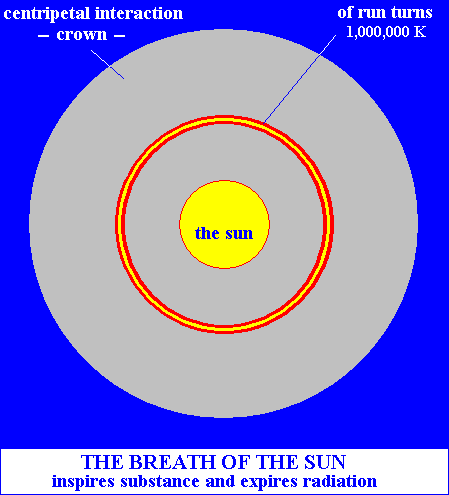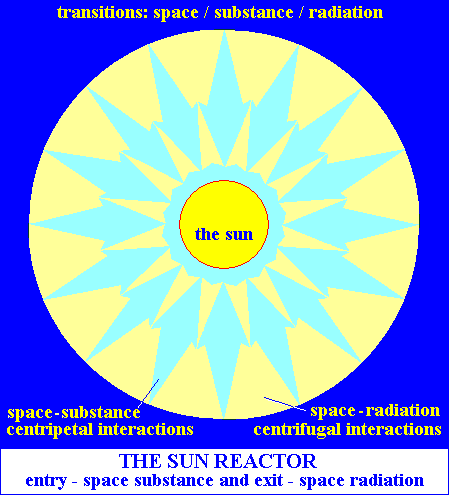The rotary movement
of the Earth
The rotary movement of the Earth is a consequence of its interactions
with the vectorial space. The link between the vectorial interaction and
the rotation is the substance (the principle of the formations of the
stars). The vectorial space is polarized by the rotation, in orthogonal
currents (the electromagnetism of the Earth), which exerts the centripetal
vectorial interaction (the gravity).
A part of this phenomena is known under the name of ionosphere, as the
centripetal vectorial interaction accelerates and polarises the substance,
on the vertical direction towards the center. This way, the substance
is polarised (ionised) and has an impulse of the centripetal acceleration
but also a tangential impulse on the rotation trajectory. The results
of this impulses are forces which transport the substance but also its
tangential impulse, the source of the angular acceleration (the rotary
movement).
The interaction produces the rotation and the rotation generate the interaction
(a closed causal chain). The transportation forces of the substance are
the effects of the orthogonality properties of the vectorial space, that
characterize the centripete vectorial interactions.
Such phenomena are found in atmospheric cyclones, the coriolis force,
ocean currents, electrolysis, arc, etc.



